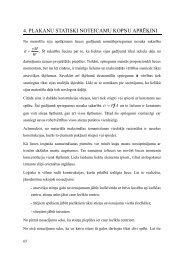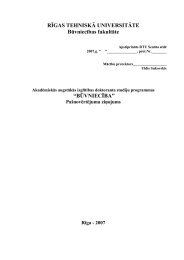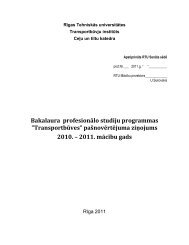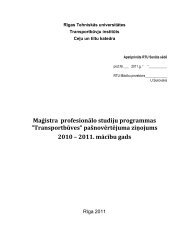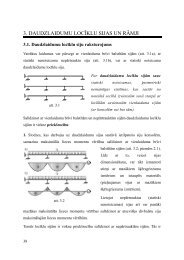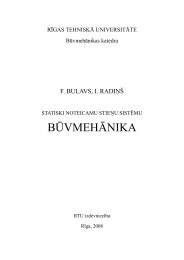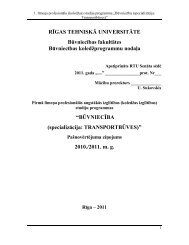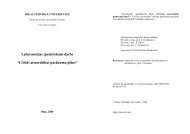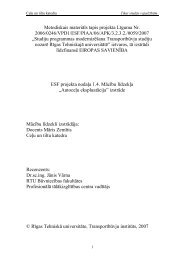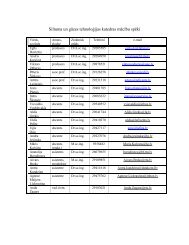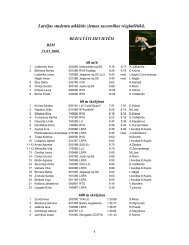Create successful ePaper yourself
Turn your PDF publications into a flip-book with our unique Google optimized e-Paper software.
174 ALEKSANDR KORJAKIN ET AL.<br />
rotations at the midsurface<br />
= A −a<br />
3 3<br />
(2)<br />
In Equation (1) the vectors v and have three components, respectively<br />
α<br />
α<br />
3,<br />
α 3<br />
v= v a + wa = γ a + wa<br />
α<br />
(3)<br />
In this sense, the FOSDT is characterized by 6 independent degrees of freedom<br />
(FOSDT-6). The FOSDT version with five degrees of freedom (FOSDT-5) is usually<br />
used. The reasons for such limitation is the deformability of the thin-walled<br />
structure even in the case of moderate thickness: the magnitude of the assumed<br />
drilling of the normal is much smaller in comparison with the other two rotations.<br />
So in the case of the FOSDT-5 we assume γ = 0. For shells of revolution in this case<br />
the displacements u, v, and w in the x (meridian), ϕ (circumferential) and x 3 (normal,<br />
outward from the reference surface of the shell) directions at any point are expressed<br />
through the following approximations [31]:<br />
ux ( , ϕ , x, t) = u( x, ϕ , t) + xγ ( x, ϕ, t)<br />
3 0 3<br />
vx ( , ϕ , x, t) = v( x, ϕ , t) + xγ ( x, ϕ, t)<br />
3 0 3<br />
wx (, ϕ , x,) t = w(, xϕ,)<br />
t<br />
3 0<br />
x<br />
ϕ<br />
(4)<br />
where u 0 , v 0 , w 0 are the displacement components at the reference surface<br />
(midsurface) and γ x , γ ϕ are the rotations of the normal associated with the transverse<br />
shear deformations. Below the index “0” will be omitted. The approximations,<br />
Equation (4), are similar to Timoshenko’s proposal in the beam theory [45]<br />
and the analogue in the plate theory [18,30].<br />
STRAIN-DISPLACEMENT RELATIONS<br />
The displacements of an arbitrary point of the shell continuum is approximated<br />
by two vectors. Therefore, the displacement field of the shell in the FOSDT-6 including<br />
extension of the normal is represented by six unknown functions—three<br />
displacements (v α ,w) and three rotations (γ α ,γ). These quantities are functions of<br />
the shell middle surface coordinates x α only. From these displacements and rotations<br />
the two-dimensional strains can be obtained. The three-dimensional Green’s<br />
strain tensor in the linear case is given by Reference [16,41].<br />
2e ij = u, i ⋅ g j + u,<br />
j ⋅g<br />
i<br />
(5)<br />
Here (...), i denotes differentiation with respect to the coordinates x i , the dot means<br />
scalar product and g i is a triad of vectors for coordinates x i on the surfaces<br />
(x 3 = const) parallel to the middle surface of the shell. For these coordinates the



